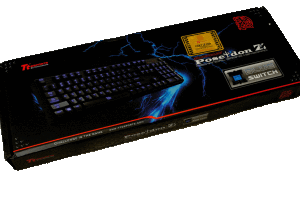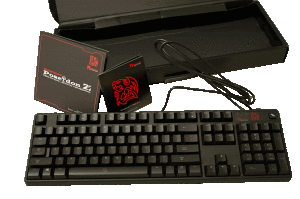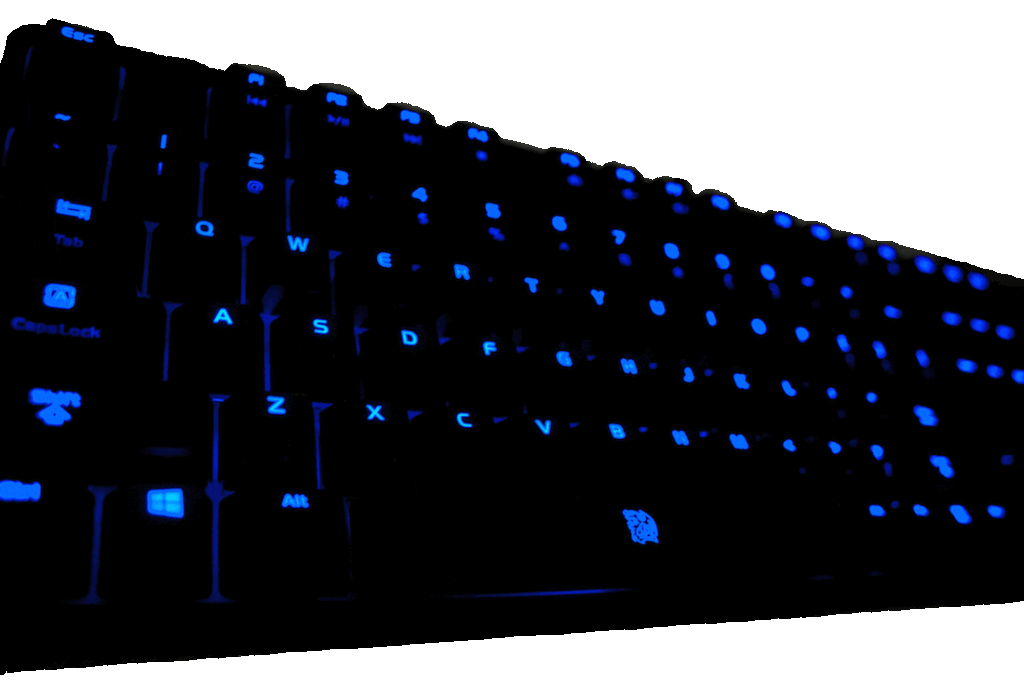It’s a fairly common theme to see technology or trends that are supposedly outdated to come back in the modern era in some form or another. It shouldn’t be a surprise then that mechanical keyboards, which have largely been replaced by membrane keyboards, are resurfacing and gaining traction amongst die-hard enthusiasts and a new generation of both gamers and typists alike. I personally still remember when I had an old mechanical keyboard in my youth, mostly because the loud clacking of the keys is something very hard to forget. However, I can’t even put a date on when I made the switch to membrane keyboards. In fact, I have no idea how I didn’t realize that most keyboards were suddenly much quieter than what I was used to. Needless to say, mechanical keyboards became a long forgotten memory until very recently, when there was a sudden resurgence in their popularity. It then hit me just how much I missed the loud clicks and clacks, the keys with feedback you could actually feel. So when I was offered to review Thermaltake’s Poseidon Z Illuminated Keyboard, I will admit I got giddy.
PACKAGING AND CONTENTS
The packaging isn’t anything to write home about. The front of the box advertises the Blue switches and the 5 year warranty that Thermaltake gives all mechanical keyboard.
The back gives you a bit more insight into the features of the mechanical keyboard, such as the “disable windows key”, the adjustable backlight, N-key rollover support, and of course the long life expectancy one can expect with mechanical keyboards. All this is presented along with a graphic of the keyboard, which also shows off the multimedia keys and the backlight brightness adjusters.
Opening the box up and removing the bubble wrap protecting the keyboard we are left with: one beautiful looking keyboard, a warranty pamphlet, and a multi-language quick installation card. Here, Thermaltake let me down… I was hoping for a sweet dragon sticker and found none! The warranty pamphlet even threw me off for double disappointment. I mean seriously, they have an awesome logo, I would’ve easily slapped that on something like my laptop.
DESIGN AND UNIQUE FEATURES
The design of the Poseidon keyboard could be considered simple, especially if you look at some of the other gaming-focused keyboards out there.
One of the first things to note is the fact that the Poseidon is a full keyboard, which depending on your needs can be a good or a bad thing. While it means the keyboard isn’t entirely travel friendly, it does contain a full number pad as well as page up, page down, insert, etc. keys that normally wouldn’t be on compact or laptop keyboards. So if it’s necessary that you have a full standard keyboard (which a fair deal of games require by default), and you don’t really plan on moving your keyboard around too much, then the Poseidon will serve you well.
When you first plug in the Poseidon you’ll be greeted by a bright blue backlight that shines not only between each key but also through the translucent lettering. One cool thing that the Poseidon does is that keys which have dual roles and would require you to press shift (1-0 for example) light up the secondary function/symbols much less than whatever you’d register if you pressed it without holding shift.
The backlight’s brightness can also be controlled with the use of the F11/F12 Keys+Fn (or the function key, which is used to perform actions assigned to certain F-keys). However, I often found that turning the backlight off all the way made the lettering on each key much harder to read than should be necessary. This is perhaps due to the fact that they aren’t a solid white but are translucent as to allow the blue light to filter through when the backlight is turned on. While this isn’t too big of an issue, especially if you know where every key is supposed to be on a keyboard, I can see it being problematic if you don’t have key locations memorized or are still getting a feel for the keyboard after switching to it from another one.
The FN key, besides letting you adjust backlight brightness, also gives you control of media players when used in conjunction with the F1-F7 keys. F1 and F3 are assigned for previous and next track, F2 is play/pause, F4 is stop, and F5-F7 control the volume. While volume control is something found on most keyboards; media controls such as play and pause are usually left out, especially on older models and non-gaming keyboards.
One thing which I personally found to be missing on the keyboard is the ability to change the screen brightness. This however may just be something more important to me than the average user since I’m usually on a laptop and frequently change the brightness depending on the ambient lighting for wherever I may be.
Review Overview
Product Build
Features
Specifications
Pricing
Availability
Fantastic Keyboard!
The Poseidon Z Illuminated Keyboard is a great choice for anyone looking to make a good long term investment in the mechanical keyboard market. It's well built, sleek and has a fantastic feel to it, but its minimalistic approach (while lending to the aforementioned sturdiness) may make it seem limited in features. The price is a bit high for entry level enthusiasts as well, but this is a keyboard that pays you back with its longevity and durability.
 Technology X Tomorrow's Technology Today!
Technology X Tomorrow's Technology Today!





Pretty amazing keyboard !!! :))